International
Globalizing intifada is the same as globalizing jihad: Hussain Ehsani
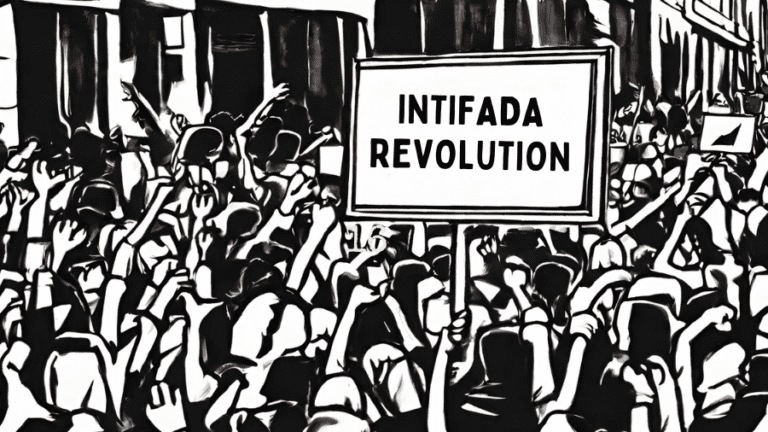
From the MacDonald Laurier Institute
By Hussain Ehsani
Canadian authorities must realize that calls for “intifada” constitute hate and even potentially an incitement to violence
When ISIS conducted its terrorist attacks on Mosul, Iraq in June 2014, several Mosul residents celebrated it as a victory for the terror group and welcomed them to the city. In March 2019, ISIS was defeated in a fight with Kurdish special units Peshmerga, Iraqi Forces, and the international coalition, and this time, five years later, Mosul celebrated the defeat of ISIS. Mosul had learned its lesson under ISIS’ reign of terror. Likewise, the fantasy of celebrating Islamic Jihadist and terrorist groups as liberators has disappeared, for the most part, across the Middle East.
However, the same cannot be said about the veneration of terror in the West. Less than 24 hours after the brutal October 7 terrorist attacks by Hamas on civilians and the Jewish state, Canada witnessed horrific and unimaginable scenes. People across the country paraded with Palestinian flags, chanting “Allah Akbar,” “Free Palestine,” “From the river to the sea, Palestine will be free,” and “Long live Intifada” — celebrating the Hamas attack that resulted in the murder of 1,200 Israelis. The scenes reminded me of Mosul’s celebration of ISIS’ victory in 2014, but this time they took place in in Mississauga, Ontario.
As Israel began its counter-terror operation the mobs became more aggressive – organizing rallies across the country, blocking intersections, threatening Jewish Businesses, attacking synagogues with guns and Molotov cocktails, and issuing bomb threat against the largest Jewish high school in Canada.
Although Hamas, Palestinian Islamic Jihad (PIJ), and the Popular Front for the Liberation of Palestine (PFLP) are listed as terrorist organizations by the Government of Canada, these groups are being praised by the pro-Jihadi mobs. They have flown the flag Hamas and the PFLP, they have worn green headbands representing Hamas, and yellow armbands of PIJ. Some in Toronto even raised the flag of the Taliban. Others have worn jackets with the symbols of Jihad, martyrs, and Al Qaeda symbols during protests. All while they scream “Intifada, intifada, long live the intifada,” “Globalize the intifada,” and “There is only one solution, intifada, revolution” – unmistakable calls for violence against Jews that refer to the bloody Palestinian terror campaigns of the late 80s and early 2000s.
Despite the clear connection between the terror groups and this violent call, law enforcement across the country have been reluctant to act and make arrests on those shouting “Intifada.” This refusal encourages the pro Hamas mobs to continue their antisemitic rallies and disguises calling for violence as a progressive solution for the Palestinian cause.
There is no doubt that calling for intifada is calling for violence. This is most clearly demonstrated by the Second Palestinian Intifada which consisted of suicide bombings, shootings, stabbings, and other terror tactics. These tactics have been used by other major Islamic Jihadist groups such as the Taliban, ISIS, and Al Qaeda. In April 1993, during the first Intifada, Hamas suicide bomber Saher Tamam Al Nablusi detonated the switch under the seats in his car and blew himself up on the West Bank. Based on the result of this attack, Hamas and its allies kicked off massive campaign of suicide attacks up against Israel. According to the statistics of Israeli institutions and studies, during two phases of Intifada, Hamas, PIJ, and PFLP conducted more than 130 suicide attacks. In the aftermath of the Intifada, the tactic of car bombs was vastly used by the Haqqani network in Afghanistan, Al Qaeda in Iraq, the Taliban in Afghanistan, and ISIS in Iraq and Syria.
And Intifada is not restricted to terror attacks but includes a clear strategy undergirded by religious ideology. For example, the book “Palestinian Resistance against Israel in Jerusalem” lays out the rhetoric and chants that Palestinians shouted in protests during the first Intifada, including: “Khaybar Khaybar O Jewish! The Mohammad Army will come back.” This chant refers to the Battle of Khaybar in which Muslims fought against the Jews in the first era of Islam in the Khaybar district of Medina in Hejaz in early 628 CE, which led to the victory of Muslims. “Mohammad Army” in this context is a metaphor for all Muslims around the world, and the chant is calling all Muslims to assemble another Khyabar, which strives to provoke and unite all Muslims against Jews. Another example “Praise the God O Muslim – explode the head of Zionist.” This chant was yelled in Toronto, Ontario. This has no other meaning except Jihad and the militarization of Muslims around the world to eliminate Jews and Israelis.
Hamas, Palestinian Islamic Jihad, and their allies are utilizing Jihadi tactics to pursue their objectives here in Canada. Calling for “Intifada” in the streets, malls, subway stations, and university campuses in Canada is a direct call for Jihadism and its principles to be enacted in the West. This is why the globalization of Intifada means globalizing the Jihad. It means globalizing violence against Jews.
Canadian authorities should realize that calls for “intifada” constitute hate and even potentially an incitement to violence. If they fail to, it will not be long until we see ISIS flags and chants for reviving the Caliphate. They are one and the same and we cannot allow this hate to fester unaddressed.
Hussain Ehsani is a Middle East affairs expert focused on the Abraham Accords and Canadian foreign policy.
conflict
Over 200 Days Into War, Family Of American Hostage in Gaza Strives For Deal To Bring Son Home

 From the Daily Caller News Foundation
From the Daily Caller News Foundation
By JAKE SMITH
The parents of an American-Israeli hostage in Gaza are doing everything in their power to bring him back home since the Israel-Hamas war began more than 200 days ago, they told the Daily Caller News Foundation.
Edan Alexander, 20, is one of five American hostages currently being held by Hamas in the Gaza Strip. His parents, Adi and Yael, have been meeting with U.S. and Israeli officials to discuss how to get him home as international negotiators rush to reach a deal with Hamas that would see the release of hostages in exchange for a temporary ceasefire.
“They’ve been constantly optimistic for months now since the beginning of January, and I know that they keep negotiating, although Hamas, sometimes they’ve stopped negotiating,” Adi told the DCNF. “But right now it feels like it’s a perfect storm. And everything needs to come kind of together. Even if it’s a small humanitarian deal that can open the gate for the bigger deal, we need to start with that. Just to kind of strike the first small deal.”
There are approximately 128 hostages being held by Hamas, including Israeli and foreign civilians and Israel Defense Forces (IDF) soldiers.
The current proposal being negotiated would see a 40-day ceasefire in exchange for up to 33 hostages currently in Hamas captivity, with the possibility of a longer-term ceasefire should both sides uphold the deal, The Wall Street Journal reported on Friday. The following phases of the ceasefire could possibly extend up to a year.
Edan was born in Tel Aviv and brought to the United States before his first birthday, growing up mostly in New Jersey, Yael and Adi told the DCNF. He joined the IDF after graduating from high school and was serving at a small base near the border of Gaza when Hamas attacked Israel on Oct. 7, killing 1,200 people and kidnapping hundreds of others.
“Before 7 a.m., he’s calling me. And he was yelling, ‘Mom. It’s like a war here. I’m seeing terrible stuff. You cannot believe what I’m seeing,” Yael told the DCNF. “And then I’m like, you’ll be ok, you just protect yourself. You will be okay … I told him that I love him. And that’s it. This is the last time that I heard him.”
Israeli intelligence later contacted Yael and Adi and told them Edan had been among those kidnapped during the attacks, showing them bodycam footage recovered from Oct. 7 depicting him being arrested and taken by Hamas operatives, the parents told the DCNF.
Yael and Adi have since spent their time raising awareness about their son and the hostages in news conferences and rallies with the other hostage families.
“We met with President Biden twice, with Vice President Kamala Harris twice, and numerous times with [White House National Security Advisor] Jake Sullivan and with [CIA Director] Bill Burns,” Adi told the DCNF. Yael added that they have a weekly update call with the State Department.
Yael has also met with Israeli Prime Minister Benjamin Netanyahu, and the family speaks with Israeli officials when visiting the region. Conversations on the Israeli side are highly sensitive and guarded to ensure vital information isn’t leaked, they told the DCNF.
“We try to keep them private and yes, a lot of confidential things are being shared there. So it’s a little bit different,” Adi told the DCNF. “It’s also that the Israelis have to have bigger fish to fry.”
Though Hamas has previously rejected several proposals, there’s some hope on the U.S. and Israeli side that they’re closing in on reaching a deal, Yael and Adi told the DCNF. Sullivan told MSNBC during an interview on April 26 that there was “new momentum” in negotiations.
Having shared the common struggle of knowing their relatives are being held by a terrorist organization in currently one the most deadly places in the world has brought many of the families closer together, Yael and Adi told the DCNF.
“It’s unreal, all the stories and everything. All the families now we are like all together, and we’re like big family, these people that I never met before, and now I’m feeling the connection with them,” Yael told the DCNF. “I just want to spend time with them because they get it.”
Yael and Adi told the DCNF that, above all, they are looking forward to their son coming home so that the family can resume some sense of normalcy. Adi joked that they’d take a trip to the Bahamas and help Edan start applying for colleges.
“I don’t think I’m gonna stop holding him,” Yael said.
Economy
‘Gambling With The Grid’: New Data Highlights Achilles’ Heel Of One Of Biden’s Favorite Green Power Sources

 From the Daily Caller News Foundation
From the Daily Caller News Foundation
By NICK POPE
New government data shows that wind power generation fell in 2023 despite the addition of new capacity, a fact that energy sector experts told the Daily Caller News Foundation demonstrates its inherent flaw.
Wind generation fell by about 2.1% in 2023 relative to 2022 generation, despite the 6 gigawatts (GW) of wind power capacity that came online last year, according to data published Tuesday by the U.S. Energy Information Administration (EIA). That wind power output dropped despite new capacity coming online and the availability of government subsidies highlights its intermittency and the problems wind power could pose for grid reliability, energy sector experts told the DCNF.
The decrease in wind generation is the first drop on record with the EIA since the 1990s; the drop was not evenly distributed across all regions of the U.S., and slower wind speeds last year also contributed to the decline, according to EIA. The Biden administration wants to have the American power sector reach carbon neutrality by 2035, a goal that will require a significant shift away from natural gas- and coal-fired power toward wind, solar and other green sources.

A table depicting the decrease of wind power generation in 2023 relative to 2022. (Screenshot via U.S. Energy Information Administration)
“Relying on wind power to meet your peak electricity demands is gambling with the grid,” Isaac Orr, a policy fellow at the Center of the American Experiment who specializes in power grid-related analysis, told the DCNF. “Will the wind blow, or won’t it? This should be a moment where policymakers step back and consider the wisdom of heavily subsidizing intermittent generators and punishing reliable coal and gas plants with onerous regulations.”
Between 2016 and 2022, the wind industry received an estimated $18.6 billion worth of subsidies, about 10% of the total amount of subsidies extended to the energy sector by the U.S. government, according to an August 2023 EIA report. Wind power received more assistance from the government than nuclear power, coal or natural gas over the same period of time.
“This isn’t subsidies per kilowatt hour of generation. It’s raw subsidies. If it were per kilowatt hour of generation, the numbers would be even more extreme,” Paige Lambermont, a research fellow at the Competitive Enterprise Institute, told the DCNF. “This is a massive amount of money. It’s enough to dramatically alter energy investment decisions for the worse. We’re much more heavily subsidizing the sources that don’t provide a significant portion of our electricity than those that do.”
“Policy that just focuses on installed capacity, rather than the reliability of that capacity, fails to understand the real needs of the electrical grid,” Lambermont added. “This recent disparity illustra
Wind power’s performance was especially lackluster in the upper midwest, but Texas saw more wind generation in 2023 than it did in 2022, according to EIA. Wind generation in the first half of 2023 was about 14% lower than it was through the first six months of 2022, but generation was higher toward the end of 2023 than it was during the same period in 2022.
In 2023, about 60% of all electricity generated in the U.S. came from fossil fuels, while 10% came from wind power, according to EIA data. Beyond generous subsidies for preferred green energy sources, the Biden administration has also aggressively regulated fossil fuels and American power plants to advance its broad climate agenda.
Biden’s Climate Bill Boosted An Offshore Wind Giant, But His Economy Brought It To The Brink https://t.co/AF7SPT2FNu
— Daily Caller (@DailyCaller) November 3, 2023
The Environmental Protection Agency’s (EPA) landmark power plant rules finalized this month will threaten grid reliability if enacted, partially because the regulations are likely to incentivize operators to close plants rather than adopt the costly measures required for compliance, grid experts previously told the DCNF. At the same time that the Biden administration is effectively trying to shift power generation away from fossil fuels, it is also pursuing goals — such as substantially boosting electric vehicle adoption over the next decade and incentivizing construction of energy-intensive computer chip factories — that are driving up projected electricity demand in the future.
“The EIA data proves what we’ve always known about wind power: It is intermittent, unpredictable and unreliable,” David Blackmon, a 40-year veteran of the oil and gas industry who now writes and consults on the energy sector, told the DCNF. “Any power generation source whose output is wholly dependent on equally unpredictable weather conditions should never be presented by power companies and grid managers as safe replacements for abundant, cheap, dispatchable generation fueled with natural gas, coal or nuclear. This is a simple reality that people in charge of our power grids too often forget. Saying that no doubt hurts some people’s feelings, but nature really does not care about our feelings.”
Blackmon also pointed out that, aside from its intermittency, sluggish build-out of the transmission lines and related infrastructure poses a major problem for wind power.
“Wind power is worthless without accompanying transmission, yet the Biden administration continues to pour billions into unreliable wind while ignoring the growing crisis in the transmission sector,” Blackmon told the DCNF.
Another long-term issue that wind power, as well as solar power, faces is the need for a massive expansion in the amount of battery storage available to store and dispatch energy from intermittent sources as market conditions dictate. By some estimates, the U.S. will need about 85 times as much battery storage by 2050 relative to November 2023 in order to fully decarbonize the power grid, according to Alsym Energy, a battery company.
The White House and the Department of Energy did not respond to requests for comment.
-

 Economy24 hours ago
Economy24 hours ago‘Gambling With The Grid’: New Data Highlights Achilles’ Heel Of One Of Biden’s Favorite Green Power Sources
-
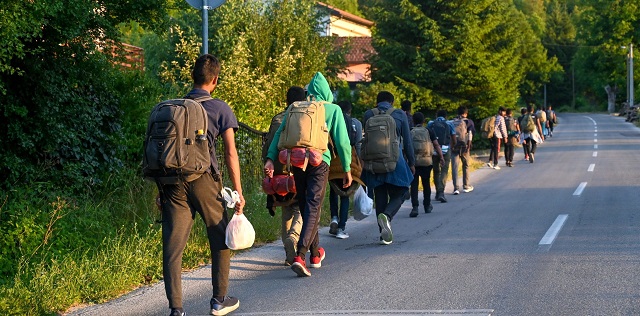
 illegal immigration1 day ago
illegal immigration1 day agoBiden’s DOJ Threatens To Sue Another State For Enforcing Immigration Law
-
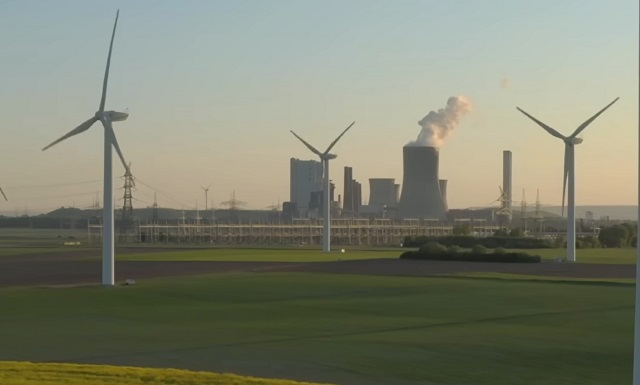
 Energy20 hours ago
Energy20 hours agoMarket Realities Are Throwing Wrench In Biden’s Green Energy Dreams
-
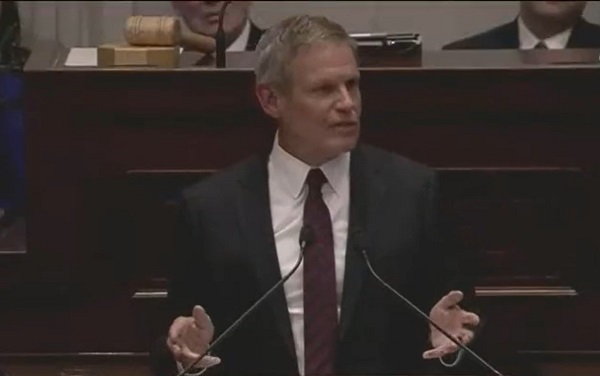
 ESG22 hours ago
ESG22 hours agoTennessee Taking Lead In Protecting Civil Rights And Free Enterprise—And Stopping Political Debanking
-

 International1 day ago
International1 day agoTrump campaign says he will pardon Jan. 6 prisoners on ‘case-by-case basis’ if re-elected
-

 Opinion2 days ago
Opinion2 days agoMisleading polls may produce more damaging federal policies
-
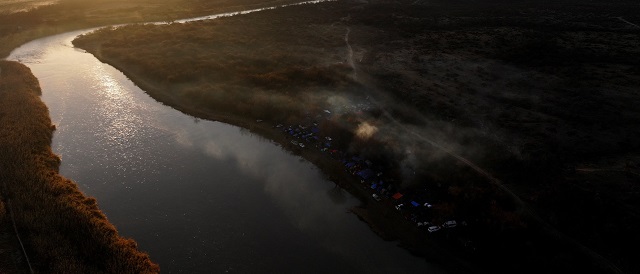
 illegal immigration1 day ago
illegal immigration1 day agoMore Chinese Illegal Migrants Apprehended At Southern Border In Two Days Than In All Of 2021: REPORT
-

 conflict1 day ago
conflict1 day agoNYPD says protesters had weapons, gas masks and ‘Death to America!’ pamphlets





